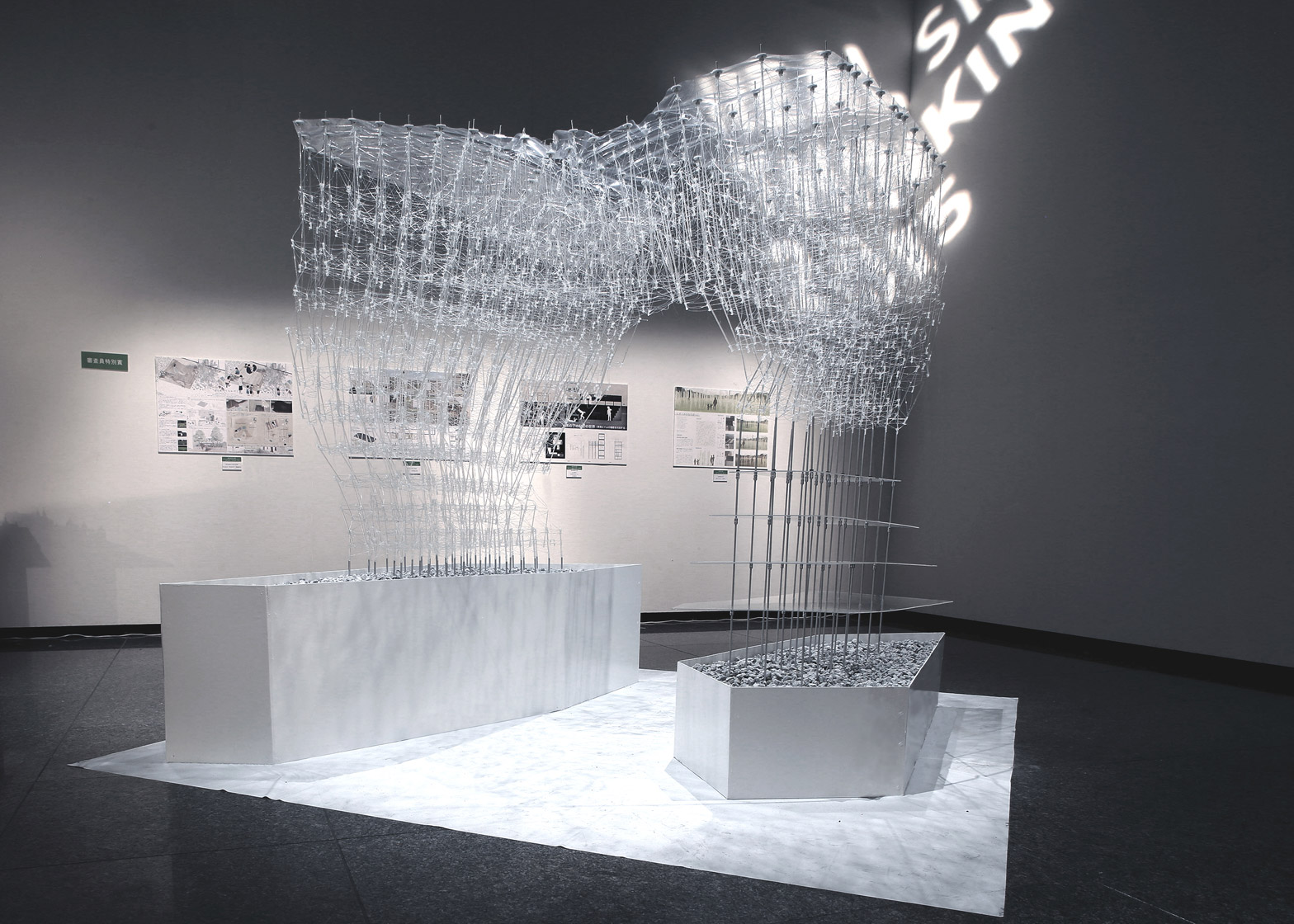A group of University of Tokyo students overseen by architect Kengo Kuma have developed a 3D-printing pen that can be used to create complex architectural structures out of plastic sticks.
The constructions – described by the team as "large-scale hand-drawn structures" – are formed when a user manually prints out strings of thermoplastic filament, guided by a digital tracking system.
The strings bond with the acrylic rods, creating forms that have good structural stability in tension and also some strength in compression. This makes the structures more durable than most 3D-printed forms, but also allows each user to adopt their own preferences during fabrication.
Kevin Clement, a member of the design team, believes the technology could help to prove that human instinct still has a role to play in digital construction technologies.
"Technology has traditionally been used to automate and replace human labour," he told Dezeen. "The issue with this approach is that it fails to take advantage of human intuition during fabrication."
"We believe our approach can bridge the current dichotomy between machine and human-made production," he added.
Clement and his team are part of the University of Tokyo's Obuchi Laboratory, led by former Architectural Association course director Yusuke Obuchi as part of the Global 30 Architecture and Urbanism programme.
The wider programme is overseen by Japanese architect Kengo Kuma, who also runs his own research laboratory. But the tutor for this project was Toshi Kiuchi.
The largest structure built by the team so far is a small pavilion on show at the Ozone Gallery in Shinjuku, northwest Tokyo.
To build it, they used the 3D-tracking system to calculate the precise positions of the sticks in realtime, helping to guide the user holding the 3D-printing pen.
Strings are emitted from the pen as the user squeezes the trigger. Initially these strings are hot, vicious and sticky, but they cool to become more like a slightly bendy clear plastic.
The pen can be used to construct much bigger forms than conventional 3D printers, which can only produce objects of an equivalent size, and also makes complicated forms possible.
"What makes this system interesting for us is that the shape can be modified to match different site conditions, and it is simple to add or subtract members to the construct, allowing it to grow and adapt to user preferences," said Clement.
"The ease of drawing together the members means that anyone can participate in the process of making complex forms at full scale."
"Large-scale printers make architectural-scale 3D-printing possible but at large expense, requiring huge gantries and controlled conditions," he added. "This means that there's not much ability for this method to be adaptable to on-site construction processes."
"For these reasons, the complex formalism embraced by much of the discipline has yet to become applicable to the industry beyond one-off cultural buildings and installations."
The structures are intended to be temporary, lasting about nine months. But they can be strengthened with extra strings, helping to reinforce weak areas, and can be adapted later to suit new functions.
The fountains used by the team so far comprise aluminium rods inserted into a pre-drilled sheet of plywood. For the latest prototype, these have been concealed beneath a bed of stones, but could also be covered with bark or plants.
The designers now want to explore the possibilities of democratising the fabrication process – ideally by inviting the public to continually adapt and extend a structure. They also want to test durability in different weather conditions.
The project is one of the most ambitious in a series using 3D-printing pens that have been developed by researchers in recent years.
Last year a team of London-based designers revealed an ultra-fine pen that allows users to "doodle in the air", while in 2013 researchers in Australia developed a pen for repairing damaged bone and cartilage.
Meanwhile, a student at the Southern California Institute of Architecture has developed a method of 3D printing that could potentially incorporate an "undo" function to remove errors.
Photography is by Jun Shimadaa and Jan Vranovský.
Project credits:
Design and Project Management Team: Kevin Clement, Anders Rod, Ratnar Sam, Gilang Arenza
Fabrication Team: Chloe Ying Xu, Takahiro Osaka, Haruka Uchida, Christopher Wilkens, Kenneth Larssen Lønning,
Nicky Li, Sion Asada, Takeru Kumagai, Alric Lee, Rodrigo Fortes, Saki Uchida
Professor: Toshi Kiuchi

